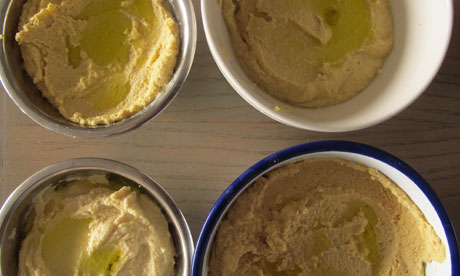John Plender in The FT
Five weeks after the collapse of Silicon Valley Bank, there is no consensus on whether the ensuing financial stress in North America and Europe has run its course or is a foretaste of worse to come.
Equally pressing is the question of whether, against the backdrop of still high inflation, central banks in advanced economies will soon row back from monetary tightening and pivot towards easing.
These questions, which are of overwhelming importance for investors, savers and mortgage borrowers, are closely related. For if banks and other financial institutions face liquidity crises when inflation is substantially above the central banks’ target, usually of about 2 per cent, acute tension arises between their twin objectives of price stability and financial stability. In the case of the US Federal Reserve, the price stability objective also conflicts with the goal of maximum employment.
The choices made by central banks will have a far-reaching impact on our personal finances. If inflation stays higher for longer, there will be further pain for those who have invested in supposedly safe bonds for their retirement. If the central banks fail to engineer a soft landing for the economy, investors in risk assets such as equities will be on the rack. And for homeowners looking to refinance their loans over the coming months, any further tightening by the Bank of England will feed into mortgage costs.
The bubble bursts
SVB, the 16th largest bank in the US, perfectly illustrates how the central banks’ inflation and financial stability objectives are potentially in conflict. It had been deluged with mainly uninsured deposits — deposits above the official $250,000 insurance ceiling — that far exceeded lending opportunities in its tech industry stamping ground. So it invested the money in medium and long-dated Treasury and agency securities. It did so without hedging against interest rate risk in what was the greatest bond market bubble in history.
The very sharp rise in policy rates over the past year pricked the bubble, so depressing the value of long-dated bonds. This would not have been a problem if depositors retained confidence in the bank so that it could hold the securities to maturity. Yet, in practice, rich but nervous uninsured depositors worried that SVB was potentially insolvent if the securities were marked to market.
An inept speech by chief executive Greg Becker on March 9 quickly spread across the internet, causing a quarter of the bank’s deposit base to flee in less than a day and pushing SVB into forced sales of bonds at huge losses. The collapse of confidence soon extended to Signature Bank in New York, which was overextended in property and increasingly involved in crypto assets. Some 90 per cent of its deposits were uninsured, compared with 88 per cent at SVB.
Fear spread to Europe, where failures of risk management and a series of scandals at Credit Suisse caused deposits to ebb away. The Swiss authorities quickly brokered a takeover by arch rival UBS, while in the UK the Bank of England secured a takeover of SVB’s troubled UK subsidiary by HSBC for £1.
These banks do not appear to constitute a homogeneous group. Yet, in their different ways, they demonstrate how the long period of super-low interest rates since the great financial crisis of 2007-09 introduced fragilities into the financial system while creating asset bubbles. As Jon Danielsson and Charles Goodhart of the London School of Economics point out, the longer monetary policy stayed lax, the more systemic risk increased, along with a growing dependence on money creation and low rates.
The ultimate consequence was to undermine financial stability. Putting that right would require an increase in the capital base of the banking system. Yet, as Danielsson and Goodhart indicate, increasing capital requirements when the economy is doing poorly, as it is now, is conducive to recession because it reduces banks’ lending capacity. So we are back to the policy tensions outlined earlier.
Part of the problem of such protracted lax policy was that it bred complacency. Many banks that are now struggling with rising interest rates had assumed, like SVB, that interest rates would remain low indefinitely and that central banks would always come to the rescue. The Federal Deposit Insurance Corporation estimates that US banks’ unrealised losses on securities were $620bn at the end of 2022.
A more direct consequence, noted by academics Raghuram Rajan and Viral Acharya, respectively former governor and deputy governor of the Reserve Bank of India, is that the central banks’ quantitative easing since the financial crisis, whereby they bought securities in bulk from the markets, drove an expansion of banks’ balance sheets and stuffed them with flighty uninsured deposits.
Rajan and Acharya add that supervisors in the US did not subject all banks to the same level of scrutiny and stress testing that they applied to the largest institutions. So these differential standards may have caused a migration of risky commercial real estate loans from larger, better-capitalised banks to weakly capitalised small and midsized banks. There are grounds for thinking that this may be less of an issue in the UK, as we shall see.
A further vulnerability in the system relates to the grotesque misallocation of capital arising not only from the bubble-creating propensity of lax monetary policy but from ultra-low interest rates keeping unprofitable “zombie” companies alive. The extra production capacity that this kept in place exerted downward pressure on prices.
Today’s tighter policy, the most draconian tightening in four decades in the advanced economies with the notable exception of Japan, will wipe out much of the zombie population, thereby restricting supply and adding to inflationary impetus. Note that the total number of company insolvencies registered in the UK in 2022 was the highest since 2009 and 57 per cent higher than 2021.
A system under strain
In effect, the shift from quantitative easing to quantitative tightening and sharply increased interest rates has imposed a gigantic stress test on both the financial system and the wider economy. What makes the test especially stressful is the huge increase in debt that was encouraged by years of easy money.
William White, former chief economist at the Bank for International Settlements and one of the few premier league economists to foresee the great financial crisis, says ultra easy money “encouraged people to take out debt to do dumb things”. The result is that the combined debt of households, companies and governments in relation to gross domestic product has risen to levels never before seen in peacetime.
All this suggests a huge increase in the scope for accidents in the financial system. And while the upsets of the past few weeks have raised serious questions about the effectiveness of bank regulation and supervision, there is one respect in which the regulatory response to the great financial crisis has been highly effective. It has caused much traditional banking activity to migrate to the non-bank financial sector, including hedge funds, money market funds, pensions funds and other institutions that are much less transparent than the regulated banking sector and thus capable of springing nasty systemic surprises.
An illustration of this came in the UK last September following the announcement by Liz Truss’s government of unfunded tax cuts in its “mini” Budget. It sparked a rapid and unprecedented increase in long-dated gilt yields and a consequent fall in prices. This exposed vulnerabilities in liability-driven investment funds in which many pension funds had invested in order to hedge interest rate risk and inflation risk.
Such LDI funds invested in assets, mainly gilts and derivatives, that generated cash flows that were timed to match the incidence of pension outgoings. Much of the activity was fuelled by borrowing.
UK defined-benefit pension funds, where pensions are related to final or career average pay, have a near-uniform commitment to liability matching. This led to overconcentration at the long end of both the fixed-interest and index-linked gilt market, thereby exacerbating the severe repricing in gilts after the announcement. There followed a savage spiral of collateral calls and forced gilt sales that destabilised a market at the core of the British financial system, posing a devastating risk to financial stability and the retirement savings of millions.
This was not entirely unforeseen by the regulators, who had run stress tests to see whether the LDI funds could secure enough liquidity from their pension fund clients to meet margin calls in difficult circumstances. But they did not allow for such an extreme swing in gilt yields.
Worried that this could lead to an unwarranted tightening of financing conditions and a reduction in the flow of credit to households and businesses, the BoE stepped in to the market with a temporary programme of gilt purchases. The purpose was to give LDI funds time to build their resilience and encourage stronger buffers to cope with future volatility in the gilts market.
The intervention was highly successful in terms of stabilising the market. Yet, by expanding its balance sheet when it was committed to balance sheet shrinkage in the interest of normalising interest rates and curbing inflation, the BoE planted seeds of doubt in the minds of some market participants. Would financial stability always trump the central bank’s commitment to deliver on price stability? And what further dramatic repricing incidents could prompt dangerous systemic shocks?
Inflation before all?
The most obvious scope for sharp repricing relates to market expectations about inflation. In the short term, inflation is set to fall as global price pressures fall back and supply chain disruption is easing, especially now China continues to reopen after Covid-19 lockdowns. The BoE Monetary Policy Committee’s central projection is for consumer price inflation to fall from 9.7 per cent in the first quarter of 2023 to just under 4 per cent in the fourth quarter.
The support offered by the Fed and other central banks to ailing financial institutions leaves room for a little more policy tightening and the strong possibility that this will pave the way for disinflation and recession. The point was underlined this week by the IMF, which warned that “the chances of a hard landing” for the global economy had risen sharply if high inflation persists.
Yet, in addition to the question mark over central banks’ readiness to prioritise fighting inflation over financial stability, there are longer-run concerns about negative supply shocks that could keep upward pressure on inflation beyond current market expectations, according to White. For a start, Covid-19 and geopolitical friction are forcing companies to restructure supply lines, increasing resilience but reducing efficiency. The supply of workers has been hit by deaths and long Covid.
White expects the production of fossil fuels and metals to suffer from recently low levels of investment, especially given the long lags in bringing new production on stream. He also argues that markets underestimate the inflationary impact of climate change and, most importantly, the global supply of workers is in sharp decline, pushing up wage costs everywhere.
Where does the UK stand in all this? The resilience of the banking sector has been greatly strengthened since the financial crisis of 2007-08, with the loan-to-deposit ratios of big UK banks falling from 120 per cent in 2008 to 75 per cent in the fourth quarter of 2022. Much more of the UK banks’ bond portfolios are marked to market for regulatory and accounting purposes than in the US.
The strength of sterling since the departure of the Truss government means the UK’s longstanding external balance sheet risk — its dependence on what former BoE governor Mark Carney called “the kindness of strangers” — has diminished somewhat. Yet huge uncertainties remain as interest rates look set to take one last upward step.
Risks for borrowers and investors
For mortgage borrowers, the picture is mixed. The BoE’s Financial Policy Committee estimates that half the UK’s 4mn owner-occupier mortgages will be exposed to rate rises in 2023. But, in its latest report in March, the BoE’s FPC says its worries about the affordability of mortgage payments have lessened because of falling energy prices and the better outlook for employment.
The continuing high level of inflation is reducing the real value of mortgage debt. And, if financial stability concerns cause the BoE to stretch out the period over which it brings inflation back to its 2 per cent target, the real burden of debt will be further eroded.
For investors, the possibility — I would say probability — that inflationary pressures are now greater than they have been for decades raises a red flag, at least over the medium and long term, for fixed-rate bonds. And, for private investors, index-linked bonds offer no protection unless held to maturity.
That is a huge assumption given the unknown timing of mortality and the possibility of bills for care in old age that may require investments to be liquidated. Note that the return on index-linked gilts in 2022 was minus 38 per cent, according to consultants LCP. When fixed-rate bond yields rise and prices fall, index-linked yields are pulled up by the same powerful tide.
Of course, in asset allocation there can be no absolute imperatives. It is worth recounting the experience in the 1970s of George Ross Goobey, founder of the so-called “cult of the equity” in the days when most pension funds invested exclusively in gilts.
While running the Imperial Tobacco pension fund after the war he famously sold all the fund’s fixed-interest securities and invested exclusively in equities — with outstanding results. Yet, in 1974, he put a huge bet on “War Loan” when it was yielding 17 per cent and made a killing. If the price is right, even fixed-interest IOUs can be a bargain in a period of rip-roaring inflation.
A final question raised by the banking stresses of recent weeks is whether it is ever worth investing in banks. In a recent FT Money article, Terry Smith, chief executive of Fundsmith and a former top-rated bank analyst, says not. He never invests in anything that requires leverage (or borrowing) to make an adequate return, as is true of banks. The returns in banking are poor, anyway. And, even when a bank is well run, it can be destroyed by a systemic panic.
Smith adds that technology is supplanting traditional banking. And, he asks rhetorically, have you noticed that your local bank branch has become a PizzaExpress, in which role, by the way, it makes more money?
A salutary envoi to the tale of the latest spate of bank failures.





